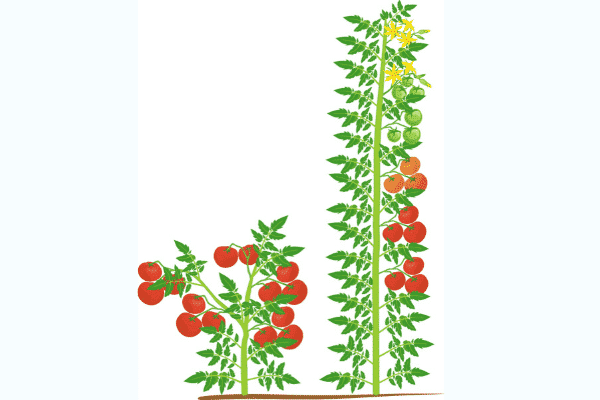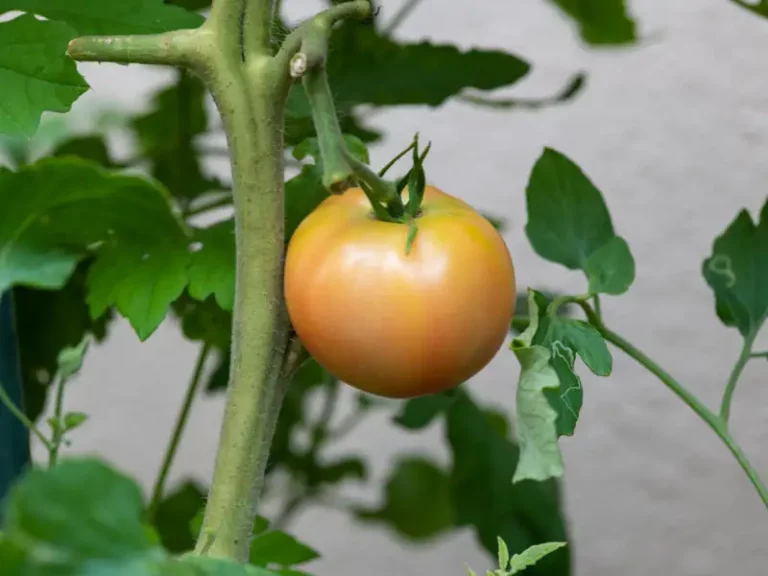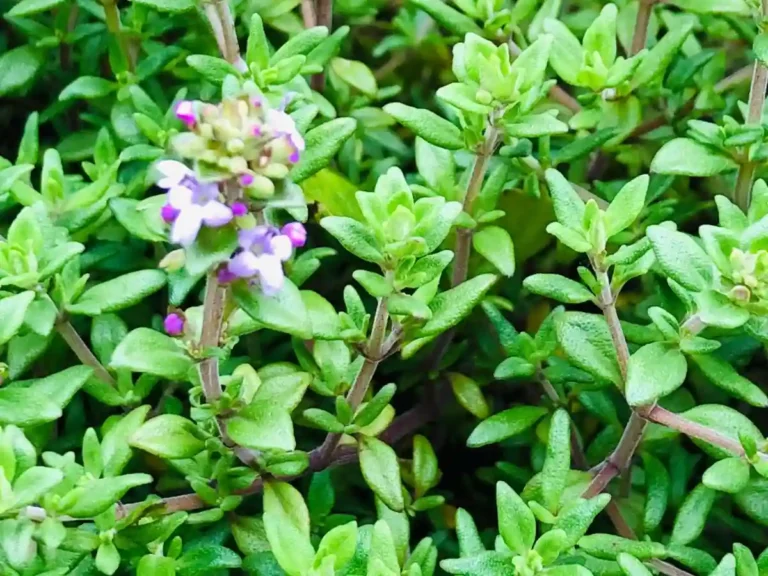How to Grow Thyme Indoors – Full Care Guide

Thyme (Thymus vulgaris) is a herbaceous perennial that can grow indoors successfully if it receives plenty of direct sunlight.
Here’s the plant’s profile:
| Botanical name | Thyme (Thymus vulgaris). |
| Sunlight requirement | Full sun. |
| Water requirements | Minimal, once every 10-15 days. |
| Soil pH | 7.0. |
| USDA Zones | 5a to 9a. |
| Temperature | 39.2–82.4°F. |
| Soil type | Well-drained loam or sandy soil. |
| Humidity | About 40%. |
| Propagation | Seed, air layering, cuttings, or by division. |
How to Grow and Care for Thyme Indoors
You can grow thyme indoors provided it gets full sun exposure, water once every 10 to 15 days, and a well-drained soil mix with a pH close to 7. Fertilizer is not required except for establishment, but light pruning is necessary to prevent it from growing too bushy.
Here’s everything you need to know about planting and caring fro thyme indoors:
Planting thyme in pots
Use a clay pot with sizeable drainage holes to establish thyme indoors. You can choose to establish the verb from seed or propagates (cuttings or divisions). Air layering is also a good way to start thyme plants in pots.
- Add a potting mixture of sandy, peat moss, potting soil and perlite in a dry clean clay pot.
- Water the potting mixture just until it is moist (not wet).
- Place either your thyme seeds or propagates in the pot to start the plant.
- Fertilize every weeks using a weak solution of fish emulsion until the plant establishes.
- Water the thyme plants when the topsoil dries to the touch.
- Add a layer of organic mulch.
Note: Seed germination is slow and takes 14 to 28 days. Cover the seeds to enhance heat for germination. Alternatively, grow them under brown light with bottom heat. After roots start showing, transplant the thymes into a pot or your indoor garden.
Space thyme 12-24 inches apart when planting in small indoor gardens.
Light requirements
Thyme prefers full sun exposure so place it near a window where it will receive at least 8 hours of bright sunlight daily. These plants will lack in flavor and grow leggy if they don’t receive enough sunlight.
During winter, place the plant under a fluorescent grow light to meet its light requirements. Place the grow light 6-inches away from the herb and keep it on for about 10 hours.
In late spring and during summer, I recommend moving your thyme outdoors when temperatures are consistently at least 60°F to enhance its growth.
Watering
Thyme requires minimal watering to thrive – at least once every 10 to 15 days. Water to a depth of 1 inch to keen the soil semi-dry and prevent fungal diseases like root rot and botrytis. Overwatering thyme often leads to stunted growth and fungal infections in the root zone.
- Water thyme only after the soil completely drains out.
- Keep the soil evenly moist until the plant is well-rooted.
Soil type and pH
Thyme prefers well-drained loamy or sandy soil with an optimum pH of 7.0. The ideal potting mix should be light and airy to facilitate fast draining of water and prevent waterlogging.
A good airy potting mix enhances soil aeration and gives roots enough space to breathe and develop well.
You can use a soil-based compost mixed with horticultural grit for potting your thyme. I prefer raising my pots when using such a medium to improve drainage even further.
Ideal temperature
Thyme likes warm climates with a temperature range of 39.2–82.4°F for optimum productivity. Therefore, the herb will thrive well at room temperature provided it gets enough sunlight and water.
Avoid placing your potted indoor thyme near air conditioners or other places with cold drafts. When the conditions are not ideal, the herb will show signs such as yellowing foliage, stunted growth, legginess, and dieback.
Fertilizer
Thyme does not require fertilizer because it prefers soil that’s lacking in nutrients. However, when establishing the plant, it is recommended to use an organic fertilizer to encourage early development of roots and shoots.
I prefer adding an organic fertilizer for my indoor thyme because I use it for cooking. A weak solution of fish emulsion is great for starting thyme and afterward, you can apply organic mulch to help support and keep the lower stem neat.
Pruning
Thyme requires pruning to prevent it from growing leggy and unsightly. Pruning also encourages the herb to produce new shoots that cab be harvested regularly for cooking.
Pruning is best done between late fall and early winter, or just before the first frost.
- Cut back the woodiest and oldest stems in half using sharp shears or a pruning knife.
- If pruning during the growing season, cut right at the onset of the last leafset.
Since thyme grows in all directions, pruning is key to maintaining indoor thyme in good shape for visual appeal.
Harvesting
Although you can harvest thyme any time after establishment, it is best to harvest just before flowering because when the herb has the highest cmount of essential oils.
Cut the branches about 4 inches above the soil when harvesting to allow the indoor herb to grow new shoots again. Preferably, use shears instead of breaking the branches by hand.
After harvesting, you can store your thyme in the regrigerator to keep it fresh. Fresh thyme lasts 10 to 14 days in the refrigerator and about 4 to 6 months in the freezer.
Wrap your thyme in a damp paper cloth or place it in a zip-lock plastic bag in the refrigerator.
Pro tip: Regular harvesting encourages growth and gives the herb a neater shape. Split and propagate thymes every 3-4 years after they become woody and undesirable
Common problems
Pests like aphids and spider mites, and root rot disease are the common problems in thyme. Here’s a table that shows how to treat these issues:
| Problem | Solution |
| Aphids | Rinse them off with a pressure water hose. |
| Spider mites | Apply neem oil to kill them. |
| Root rot | Reduce watering; keep soil semi-dry. |
| Legginess | Avoid applying fertilizer; provide full sun exposure. |
Thymes are susceptible to pests and bugs such as spider mites and aphids. Use organic pesticides such as neem oil to control pests and bugs.
Common varieties of thyme
| Variety | Characteristics |
| Tabor | Very pungent with dark green leaves and pink flowers. |
| Passion pink | Pink blooms. |
| Provencial | Small, narrow gray-green leaves, citrus aroma; white flowers. |
| Silver Posie | Large leaves with white margins. |
| Narrow Leaf French | Fine gray leaves and white flowers. |
| Silver Queen | Lemon aroma; silver leaves. |
| Orange Balsam | Lavender flowers; orange fragrance. |
| Argenteus | Greenish leaves with a creamish hint. |
| Dot’s Well | Tiny, narrow foliage. |
| Broadleaf English | Small but broad leaves, notably sweet aroma. |
| Gray Hill | Narrow gray leaves; lavender fragrance. |





